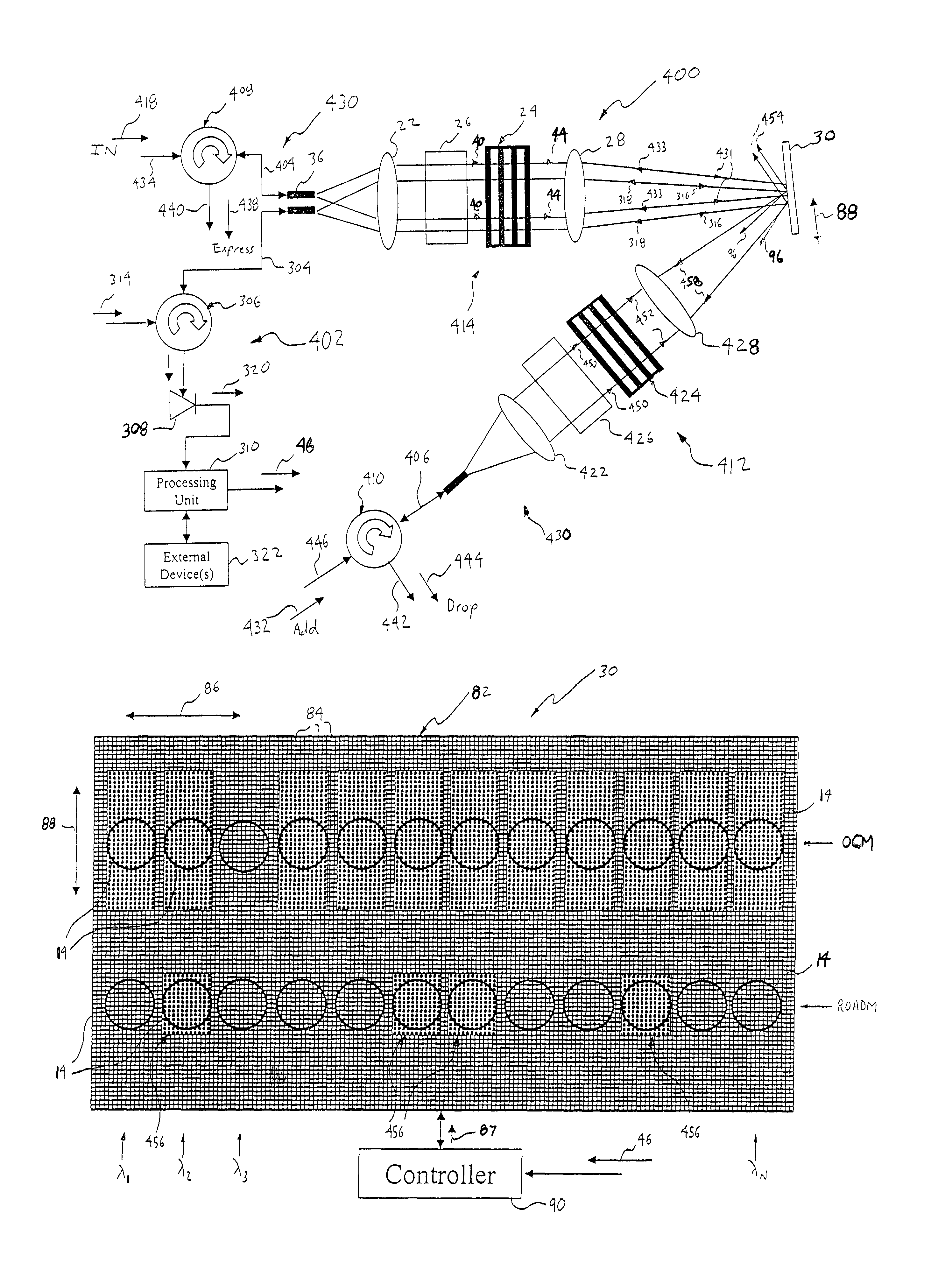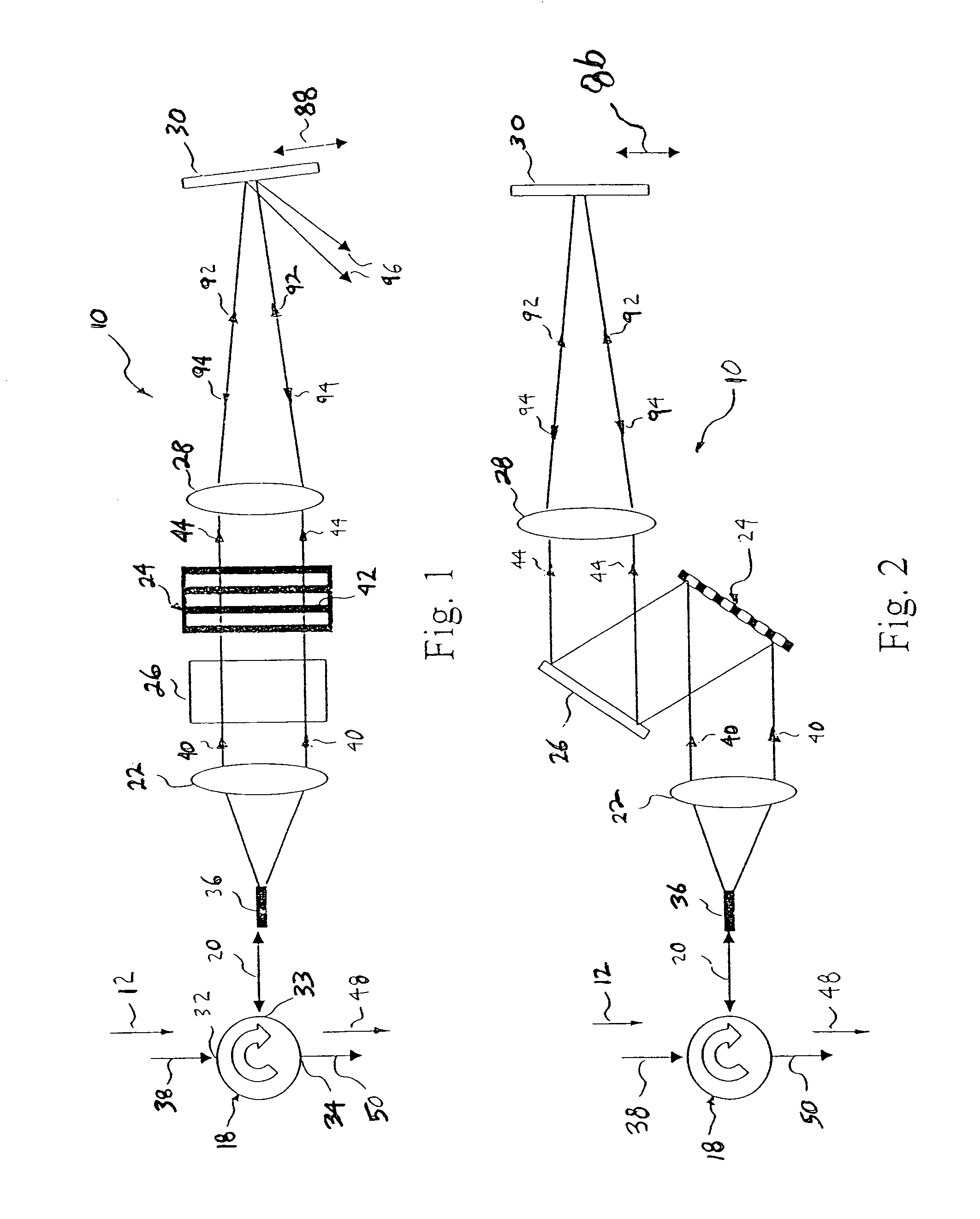Multifunctional optical device having a spatial light modulator with an array of micromirrors
a multi-functional, micromirror technology, applied in the direction of optical elements, multiplex communication, instruments, etc., can solve the problems of large diffraction loss and inability to plan channels independently
- Summary
- Abstract
- Description
- Claims
- Application Information
AI Technical Summary
Benefits of technology
Problems solved by technology
Method used
Image
Examples
Embodiment Construction
[0050]The present invention provides a multifunctional optical device that uses a single spatial modulator to provide multiple optical switching and / or conditioning of at least one optical input signal. For example, the optical device may function as both an optical filter and a reconfigurable optical add / drop device (ROADM). Another example is an optical device that may function as an optical channel monitor (OCM) and a dynamic gain equalizer filter (DGEF). In this manner, the functionality of the spatial light modulator can be efficiently utilized. To better understand the specific embodiments of the present invention, a reconfigurable optical filter 10 is first described in FIGS. 1–9, which has a substantial number of components common to the specific multifunctional embodiments.
[0051]Referring to FIGS. 1–3, the reconfigurable optical filter 10 selectively filters or attenuates a desired optical channel 14 of light (i.e., a wavelength band) of an optical WDM input signal 12. The ...
PUM
 Login to View More
Login to View More Abstract
Description
Claims
Application Information
 Login to View More
Login to View More - R&D
- Intellectual Property
- Life Sciences
- Materials
- Tech Scout
- Unparalleled Data Quality
- Higher Quality Content
- 60% Fewer Hallucinations
Browse by: Latest US Patents, China's latest patents, Technical Efficacy Thesaurus, Application Domain, Technology Topic, Popular Technical Reports.
© 2025 PatSnap. All rights reserved.Legal|Privacy policy|Modern Slavery Act Transparency Statement|Sitemap|About US| Contact US: help@patsnap.com



